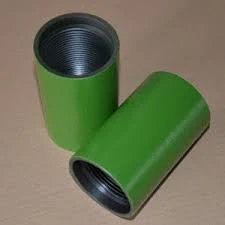- Afrikaans
- Albanian
- Amharic
- Arabic
- Armenian
- Azerbaijani
- Basque
- Belarusian
- Bengali
- Bosnian
- Bulgarian
- Catalan
- Cebuano
- Corsican
- Croatian
- Czech
- Danish
- Dutch
- English
- Esperanto
- Estonian
- Finnish
- French
- Frisian
- Galician
- Georgian
- German
- Greek
- Gujarati
- Haitian Creole
- hausa
- hawaiian
- Hebrew
- Hindi
- Miao
- Hungarian
- Icelandic
- igbo
- Indonesian
- irish
- Italian
- Japanese
- Javanese
- Kannada
- kazakh
- Khmer
- Rwandese
- Korean
- Kurdish
- Kyrgyz
- Lao
- Latin
- Latvian
- Lithuanian
- Luxembourgish
- Macedonian
- Malgashi
- Malay
- Malayalam
- Maltese
- Maori
- Marathi
- Mongolian
- Myanmar
- Nepali
- Norwegian
- Norwegian
- Occitan
- Pashto
- Persian
- Polish
- Portuguese
- Punjabi
- Romanian
- Russian
- Samoan
- Scottish Gaelic
- Serbian
- Sesotho
- Shona
- Sindhi
- Sinhala
- Slovak
- Slovenian
- Somali
- Spanish
- Sundanese
- Swahili
- Swedish
- Tagalog
- Tajik
- Tamil
- Tatar
- Telugu
- Thai
- Turkish
- Turkmen
- Ukrainian
- Urdu
- Uighur
- Uzbek
- Vietnamese
- Welsh
- Bantu
- Yiddish
- Yoruba
- Zulu
coupling for tubing
Understanding Coupling for Tubing An Essential Aspect of Oil and Gas Operations
In the oil and gas industry, the importance of tubing cannot be overstated. Tubing serves as the conduit through which oil and gas are extracted from the earth and transported for processing. One of the essential components in the operation and maintenance of tubing is the coupling. This article will delve into the types, functions, and considerations of couplings in tubing applications.
What is Coupling?
Coupling refers to a mechanical device used to connect two lengths of tubing or pipe, facilitating the flow of fluids. In the context of oil and gas, couplings are crucial in maintaining the integrity and functionality of tubing systems. They are designed to provide a secure connection, preventing leakage and allowing for the safe transport of hydrocarbons under pressure.
Types of Couplings
Several types of couplings are commonly used in tubing operations, each designed to meet specific requirements
1. Regular Couplings These are the most basic type, typically used to connect two pieces of tubing. Regular couplings are essential in various applications and are characterized by their straightforward design.
2. Threaded Couplings Often used in situations where a more secure connection is needed, threaded couplings have male and female threads that allow for tighter joins. This type of coupling is particularly favored in high-pressure scenarios where leaks are unacceptable.
3. Welded Couplings As the name suggests, these couplings are welded onto the tubing. This method is often used for permanent connections, providing an extremely strong bond that is resistant to dislodgement or stress.
4. Slip Couplings These couplings allow for a slight overlap of tubing sections. They are particularly useful when alignment is a concern, as they can accommodate minor discrepancies in tubing lengths.
5. Grooved Couplings Utilizing a grooved design, these couplings allow for quick assembly and disassembly. They are often used in temporary setups or in systems that require regular maintenance.
Functions of Coupling
The primary functions of coupling in tubing operations include
coupling for tubing

- Fluid Containment One of the main roles of a coupling is to ensure that fluids remain contained within the tubing. This is essential not only for operational efficiency but also for environmental protection.
- Pressure Management Couplings must be able to withstand the inherent pressures found in oil and gas extraction. Knowing how much pressure a coupling can handle is vital for operational safety.
- Facilitating Maintenance Couplings allow for the easy removal and replacement of sections of tubing. This is crucial for maintenance tasks, enabling operators to perform inspections or make repairs without needing to replace a significant portion of the tubing system.
- Structural Integrity Providing a solid connection between tubing sections helps maintain the overall integrity of the well system. Properly installed couplings can prevent failure due to corrosion or physical stress.
Key Considerations
When selecting couplings for tubing applications, several factors must be considered
- Material Compatibility The material of the coupling must be compatible with the type of fluids being transported. Corrosive environments may require specific materials to ensure durability.
- Pressure Ratings Understanding the pressure requirements of the system is critical. Couplings must be rated to handle the maximum expected pressure to prevent failure.
- Temperature Tolerance The operational temperature of the environment can affect the choice of coupling. High temperatures can lead to material degradation, so knowing the thermal limits is essential.
- Installation Requirements Some couplings may require specialized tools or skills for installation. Assessing the available resources is important for ensuring efficiency in the field.
Conclusion
Couplings play a critical role in the integrity and efficiency of tubing systems in the oil and gas industry. By understanding the different types of couplings, their functions, and the key considerations for selection, operators can enhance the safety and reliability of their operations. Properly chosen and installed couplings contribute not only to operational success but also to the overall sustainability of oil and gas extraction processes. Given the challenges faced in the industry, the significance of effective coupling cannot be overlooked.
-
Tubing Pup Joints: Essential Components for Oil and Gas OperationsNewsJul.10,2025
-
Pup Joints: Essential Components for Reliable Drilling OperationsNewsJul.10,2025
-
Pipe Couplings: Connecting Your World EfficientlyNewsJul.10,2025
-
Mastering Oilfield Operations with Quality Tubing and CasingNewsJul.10,2025
-
High-Quality Casing Couplings for Every NeedNewsJul.10,2025
-
Boost Your Drilling Efficiency with Premium Crossover Tools & Seating NipplesNewsJul.10,2025







